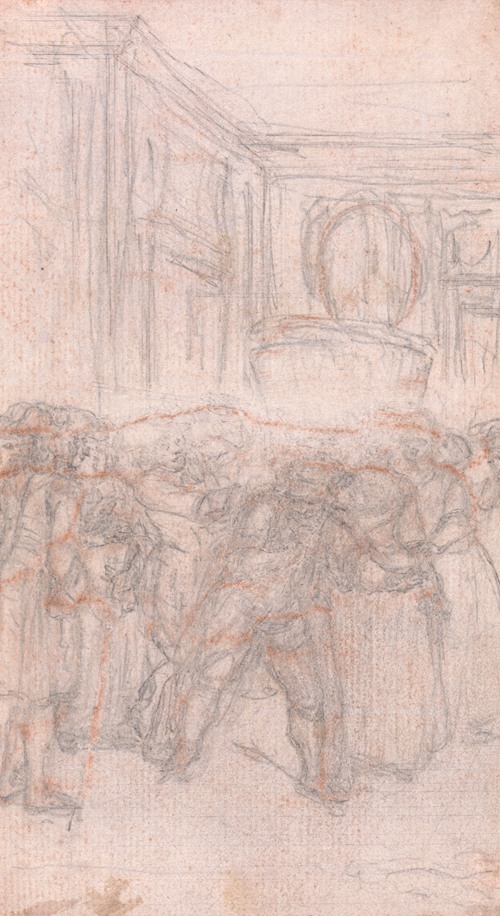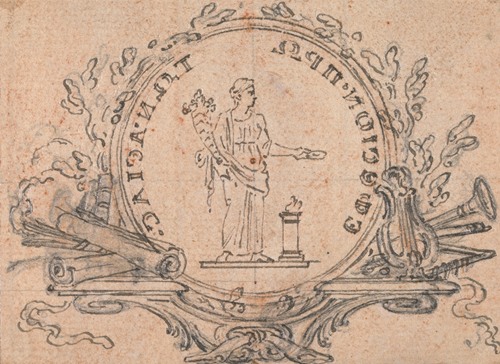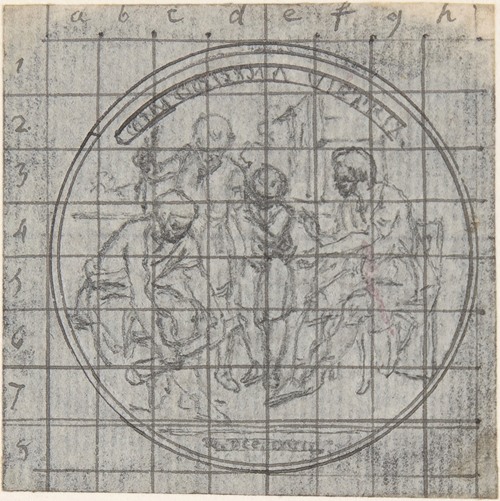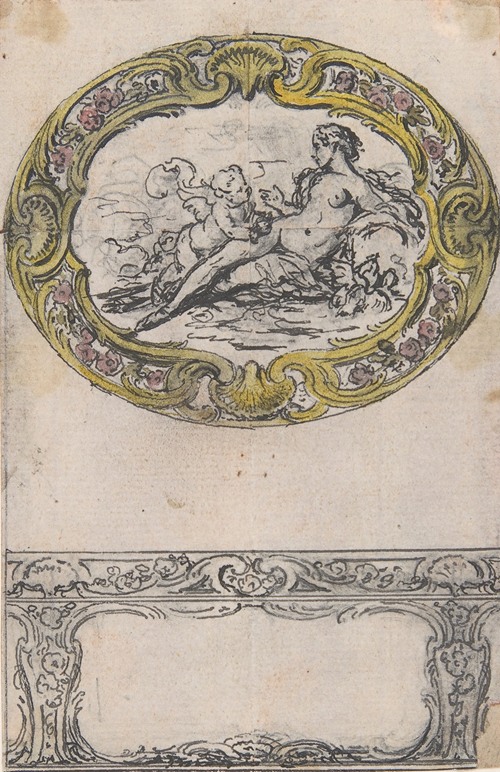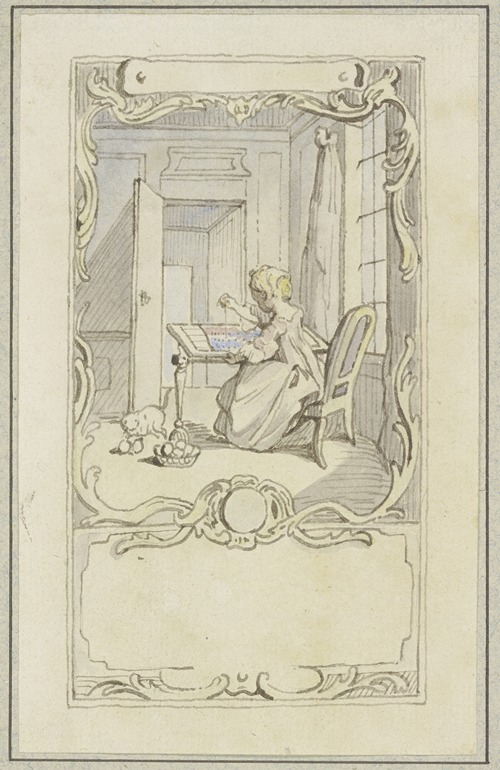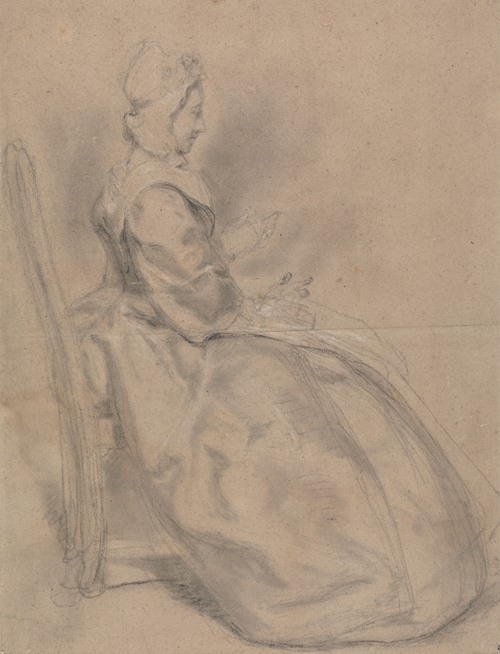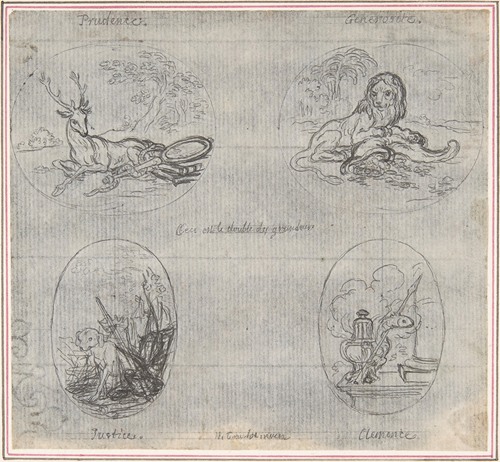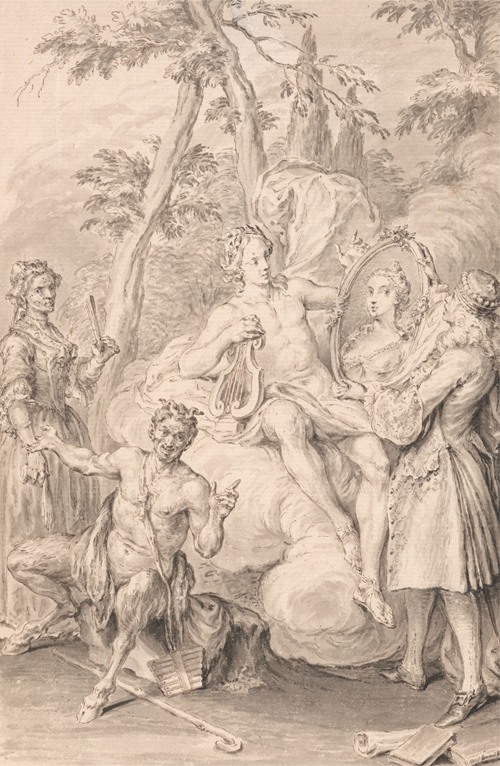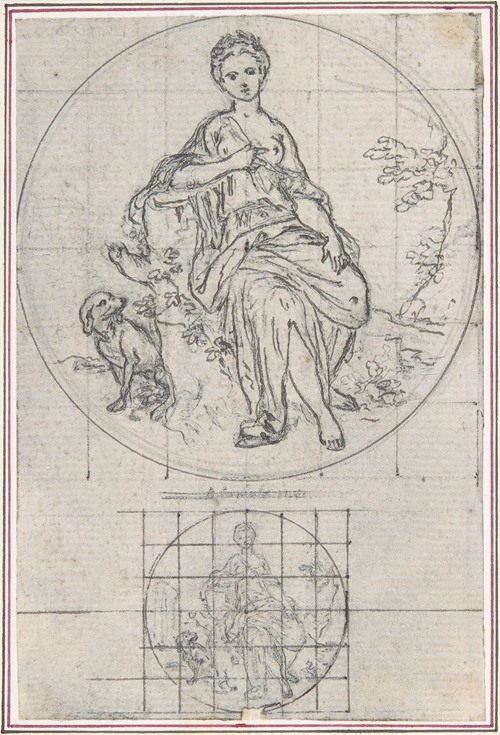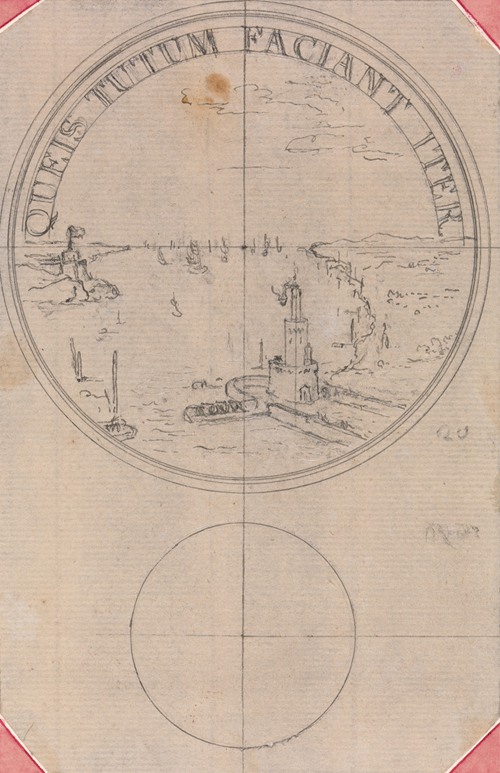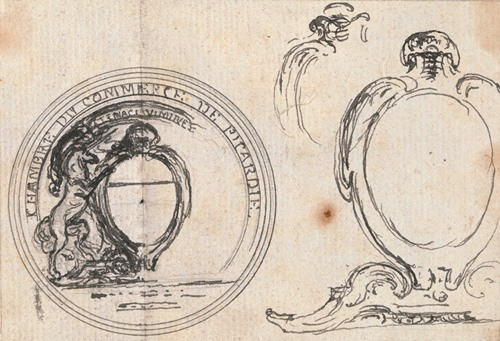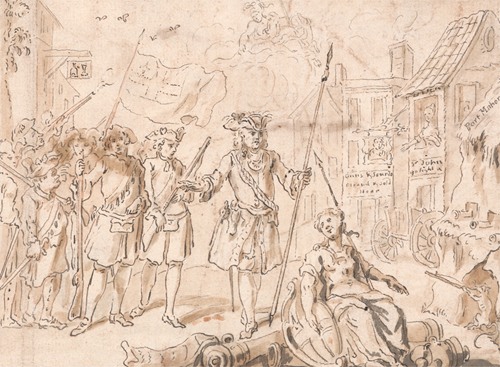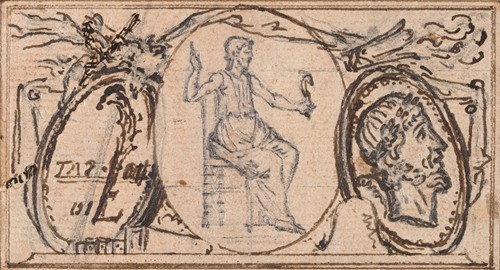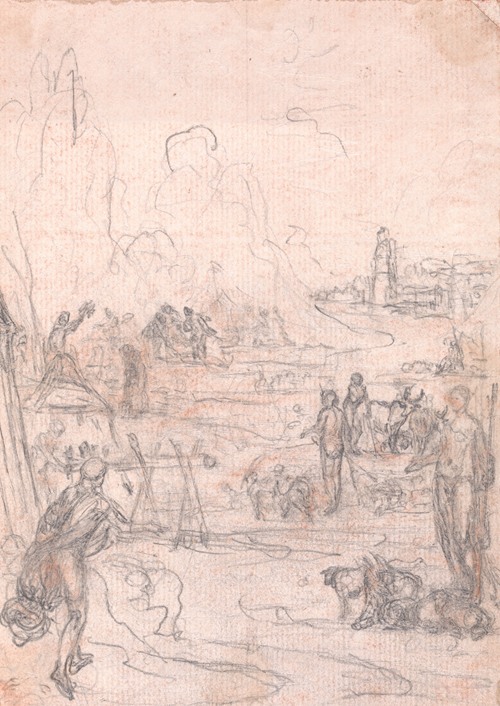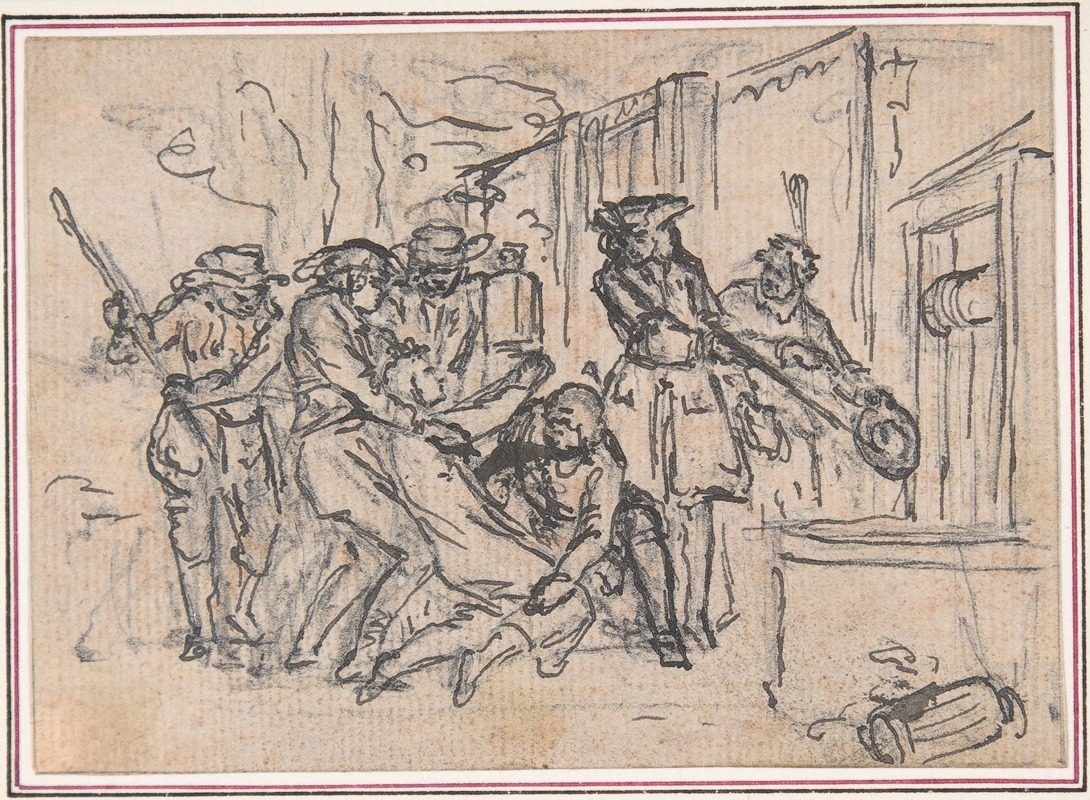

Hubert-François Bourguignon, commonly known as Gravelot, was a French engraver, a famous book illustrator, designer and drawing-master. Born in Paris, he emigrated to London in 1732, where he quickly became a central figure in the introduction of the Rococo style in British design, which was disseminated from London in this period, through the media of book illustrations and engraved designs as well as by the examples of luxury goods in the "French taste" brought down from London to provincial towns and country houses.
Gravelot was a mediocre student, who did not profit from a premature stay in Rome, financed by his father, from which he returned, his funds depleted, without a stay in Lyon, an artistic center that often provided a stop-over for art students between Paris and Rome. Unsuccessful in a commercial venture at Saint Domingue on his father's account, he returned to Paris and became the pupil first of Jean II Restout, and then of François Boucher.
His years in London, 1732–45 were fruitful ones. They coincided with a period when Britain and France were not at war. Though French-trained craftsmen, engravers and even some painters, were already working in London, but the Rococo style in luxury works of art was relatively new: the Spitalfields silk industry, always dominated by Parisian innovations rendered by Huguenot designers and weavers, produced its earliest asymmetrical and naturalistic floral designs in the early 1730s, and the earliest identified full-blown Rococo piece of London silver, by the second-generation Huguenot Paul de Lamerie, can be dated about 1731. Gravelot's trip was not a speculation; he had been invited by Claude du Bosc to engrave designs for an English translation of Bernard Picart's Ceremonies and Religious Customs of... the Known World.
By that time Gravelot had become a central figure in the artistic set that gathered at Slaughter's Coffee House in St Martin's Lane and formed the St. Martin's Lane Academy organised by William Hogarth in the premises of his father-in-law Sir James Thornhill. The St. Martin's Lane Academy was an unofficial precursor of the Royal Academy at a time when there were no public exhibitions of art in London, no annual salons as in Paris, no public museums and no places to see or copy from good examples of paintings save in the houses of the rich or noble. As a drawing-master Gravelot had Thomas Gainsborough for a pupil.
Anti-French sentiments in London after the Battle of Fontenoy in 1745 forced Gravelot's return to Paris that October, accompanied by his student Thomas Major, later the first engraver voted an Associate of the Royal Academy, and with a fortune of 10,000 pounds sterling; there he soon settled down as a book illustrator: among his book illustrations, projects were Tom Jones (Paris and London, 1750), Manon Lescaut (1753, illustration, left) a Décaméron (1757), La Nouvelle Héloïse (1761), the Contes moraux of Marmontel (1765), a French translation of Ovid's Metamorphoses (1767–71), and of Torquato Tasso's Gerusalemme Liberata (1771). He died in Paris.
